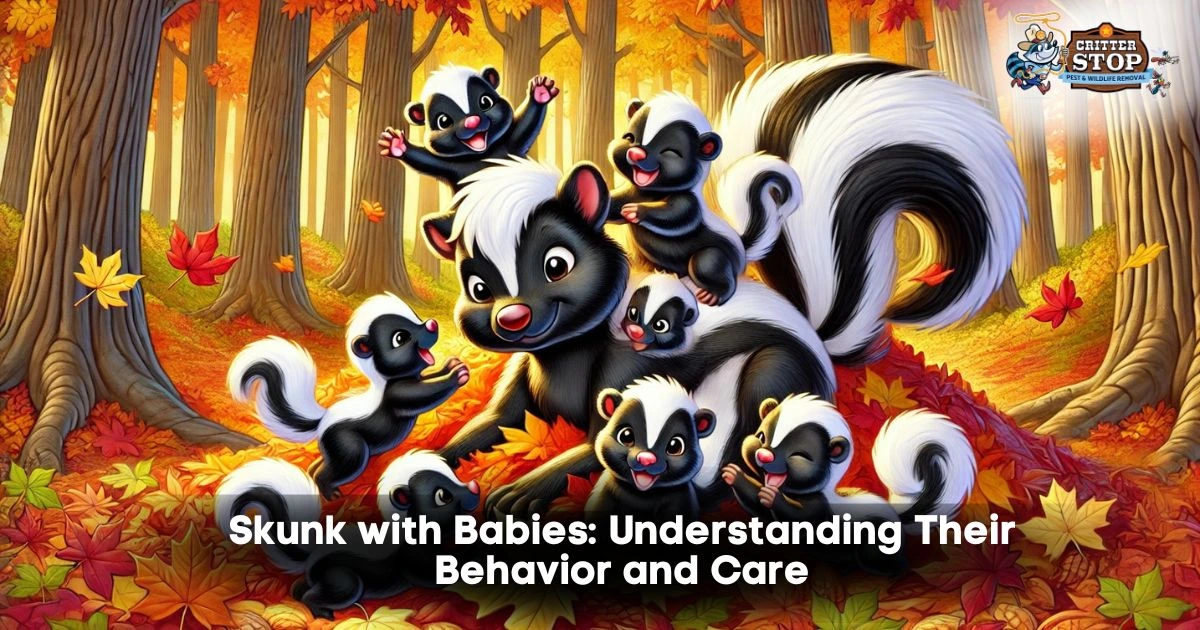
Skunks, particularly those with babies, are fascinating creatures that evoke curiosity and caution. As nocturnal mammals, skunks are known for their distinct appearance and infamous defensive spray. When a skunk cares for its young, it’s essential to understand its behavior and habitat and how to manage encounters with it safely.
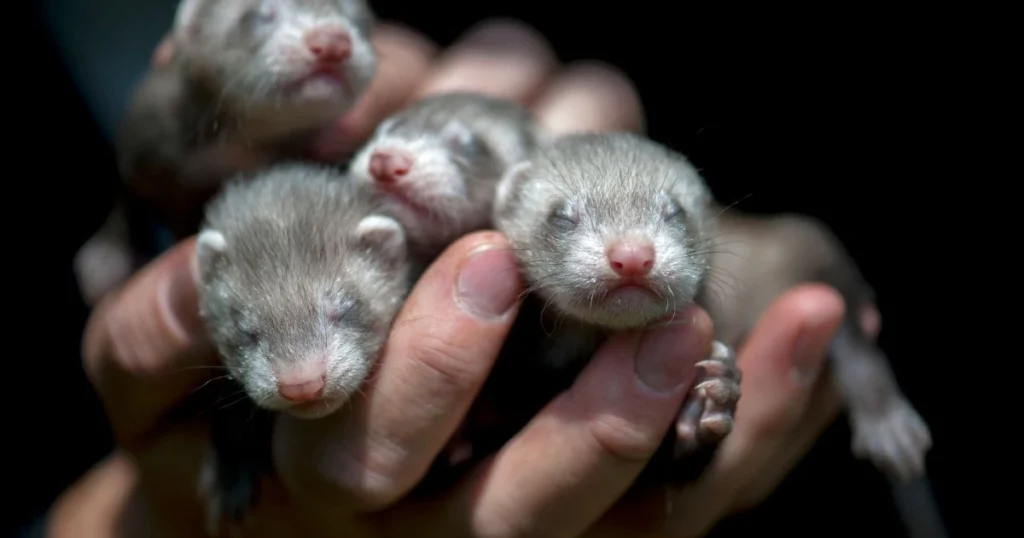
A skunk litter refers to a group of baby skunks, known as kits, born during a single reproductive cycle. Female skunks typically give birth to 4-6 kits, but larger litters of up to 10 are not unheard of. The litter is born in early spring, with the kits relying entirely on their mother for survival during their first weeks.
Mother skunks are highly attentive to their young. They build dens in secure locations to protect their kits from predators, such as under porches, hollow logs, or abandoned burrows. The mother provides milk and begins teaching her babies essential survival skills, such as foraging for food and recognizing threats.
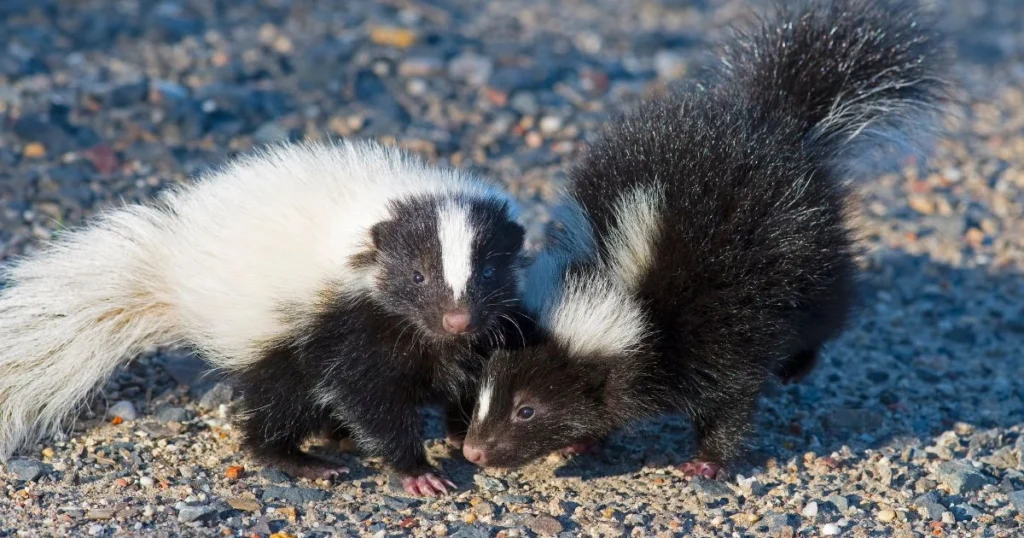
A skunk with babies is more likely to display defensive behavior. While skunks are generally non-aggressive, a mother skunk will defend her litter if she perceives a threat. Signs of agitation include:
These behaviors precede their infamous spray, a highly pungent liquid released to deter predators.
Mother skunks forage for food at night, leaving the den while the kits stay behind. As the kits age, they begin accompanying their mother, learning to find insects, fruits, and small rodents that make up their diet.
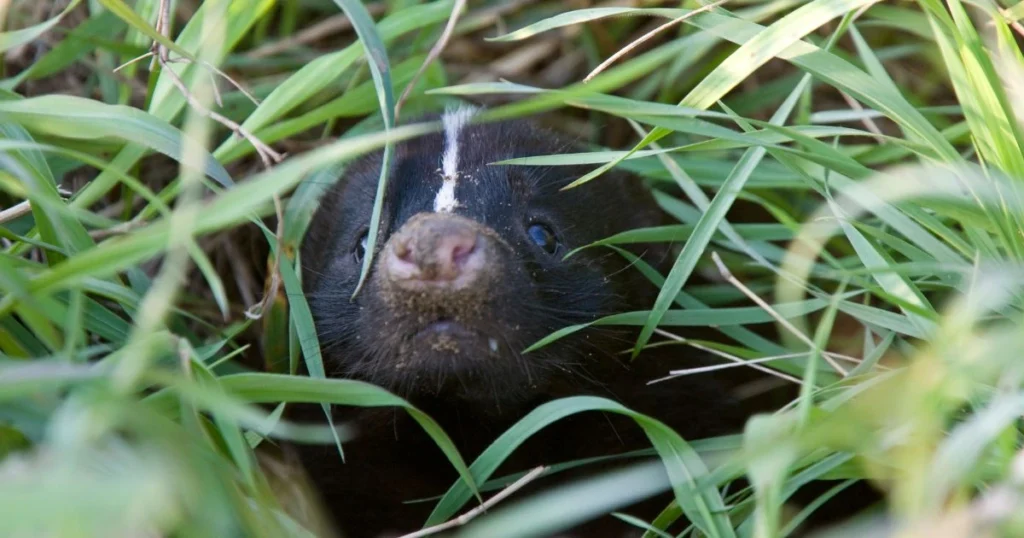
Skunks with babies often seek sheltered areas that provide safety from predators and proximity to food sources. Some of the most common den locations include:
If you spot a skunk with babies, maintain a safe distance. Avoid sudden movements or loud noises that could startle the skunk. If the skunk displays defensive behavior, back away slowly.
Seal potential entry points, such as gaps under porches or sheds, and remove attractants like pet food or fallen fruit from your yard to prevent skunks from making their home there.
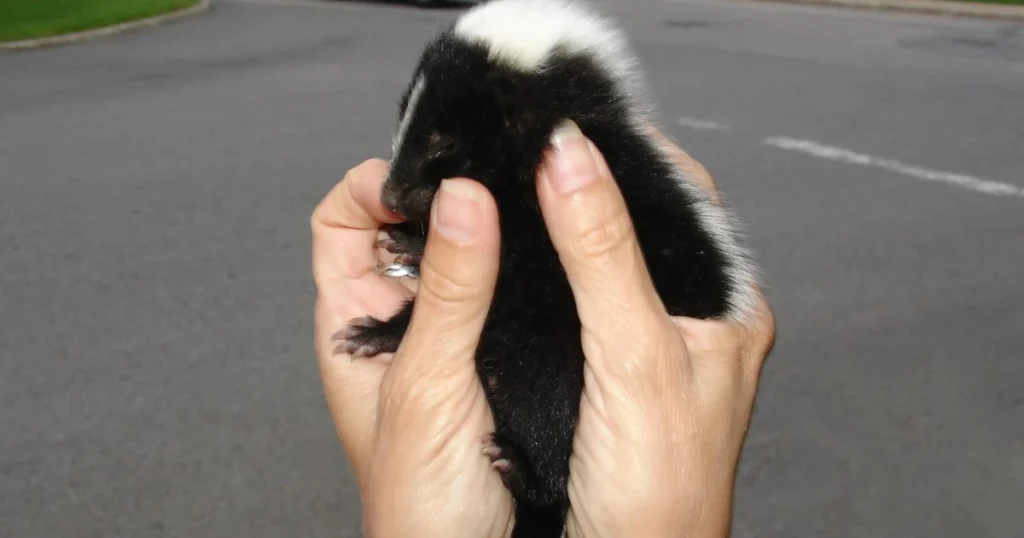
If a skunk family has taken residence on your property, humane removal is the best option. Avoid handling the skunks yourself, which can lead to injury or spraying. Instead:
Skunks with babies require careful handling to avoid harm to the animals and yourself. Professional wildlife removal experts like Critter Stop are trained to manage skunk families humanely. They use specialized techniques to relocate the skunks safely and prevent future infestations.
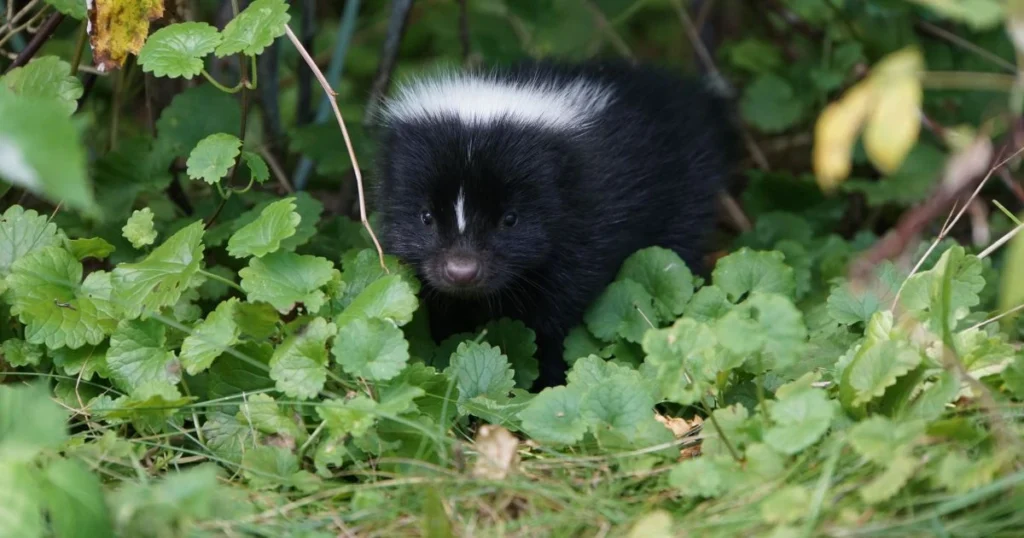
To minimize the risk of skunks settling on your property:
If you encounter a skunk family on your property and are unsure how to proceed, it’s time to contact a professional wildlife control service. They have the expertise to:
Critter Stop offers expert, humane wildlife removal services if you face skunk-related challenges. Our team ensures the safety of both your family and the animals involved. Contact Critter Stop at (214) 234-2616 today for a free consultation.
Skunks and their babies are often misunderstood, but learning about these unique animals can help us coexist peacefully. In this FAQ section, we answer common questions about baby skunks, their behavior, and care.
If you encounter a skunk with babies, avoid disturbing them. Female skunks are protective and may spray if they feel threatened. It's best to observe from a safe distance and contact a wildlife professional like Critter Stop if the skunks pose a problem on your property.
Baby skunks, known as kits, are born blind and deaf and rely entirely on their mother. They develop their iconic stripes before birth and start venturing out of the den at about six weeks old.
Baby spotted skunks are smaller than striped skunks and have distinctive broken stripes or spots on their fur. Their tiny size and unique patterns make them easy to identify.
A baby skunk found alone may be orphaned or separated from its mother. Observe from a distance to see if the mother returns. If not, contact a licensed wildlife rehabilitator for assistance.
A baby skunk is called a kit. Kits are born in litters ranging from 2 to 10 and remain with their mother for several months before becoming independent.
In many places, keeping a baby skunk as a pet is illegal without special permits. Even with permits, skunks require specific care and diets, making them challenging pets.
Mother skunks are highly protective and will use their spray as a defense mechanism. They often lead their kits to safety and teach them survival skills as they grow.
Yes, baby skunks can spray as early as a few weeks old. However, their aim may not be as precise as adult skunks. This ability helps them defend themselves from predators at an early age.
Visit our Critter Library and learn more about our furry friends